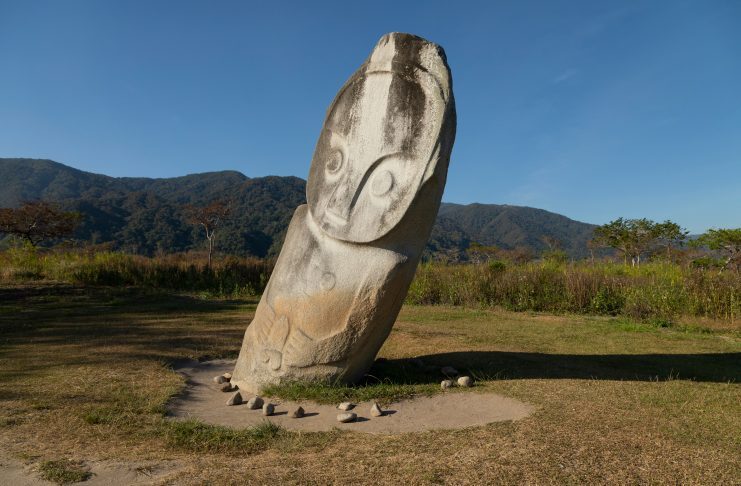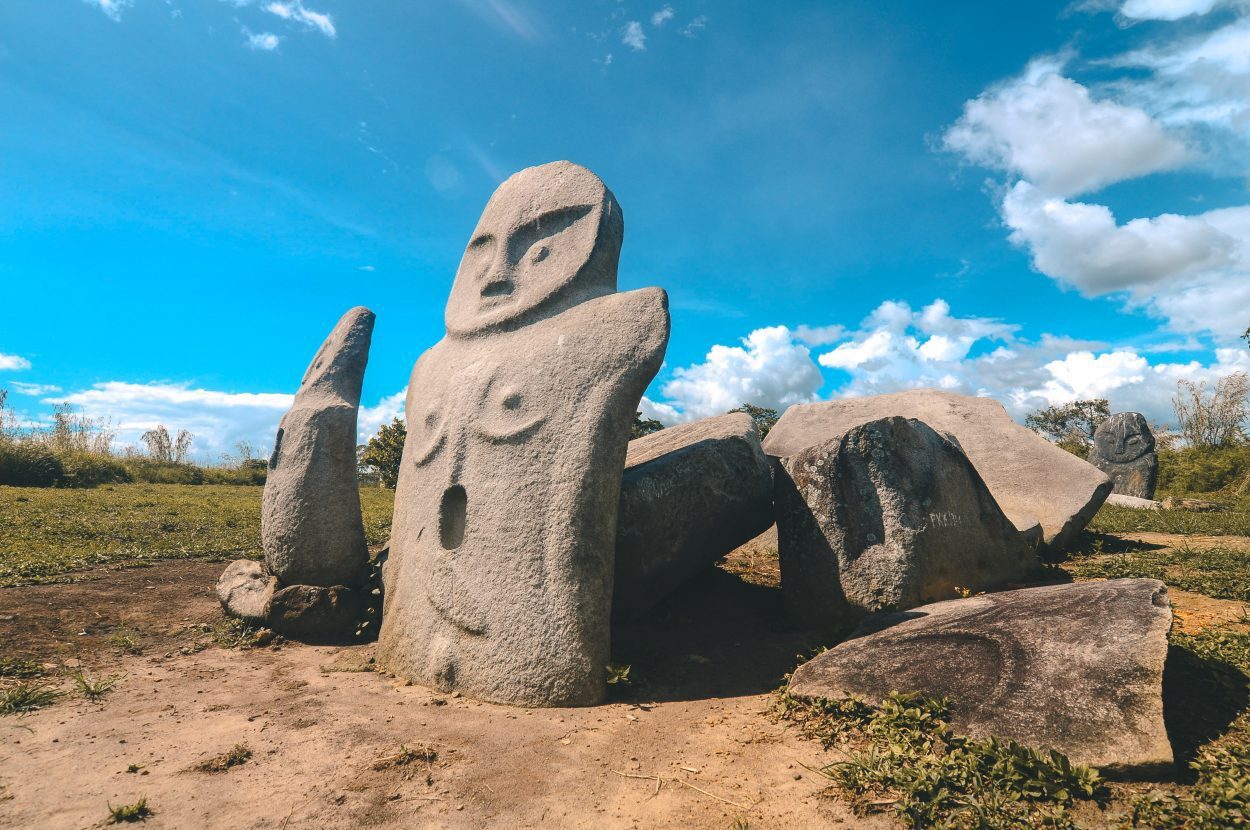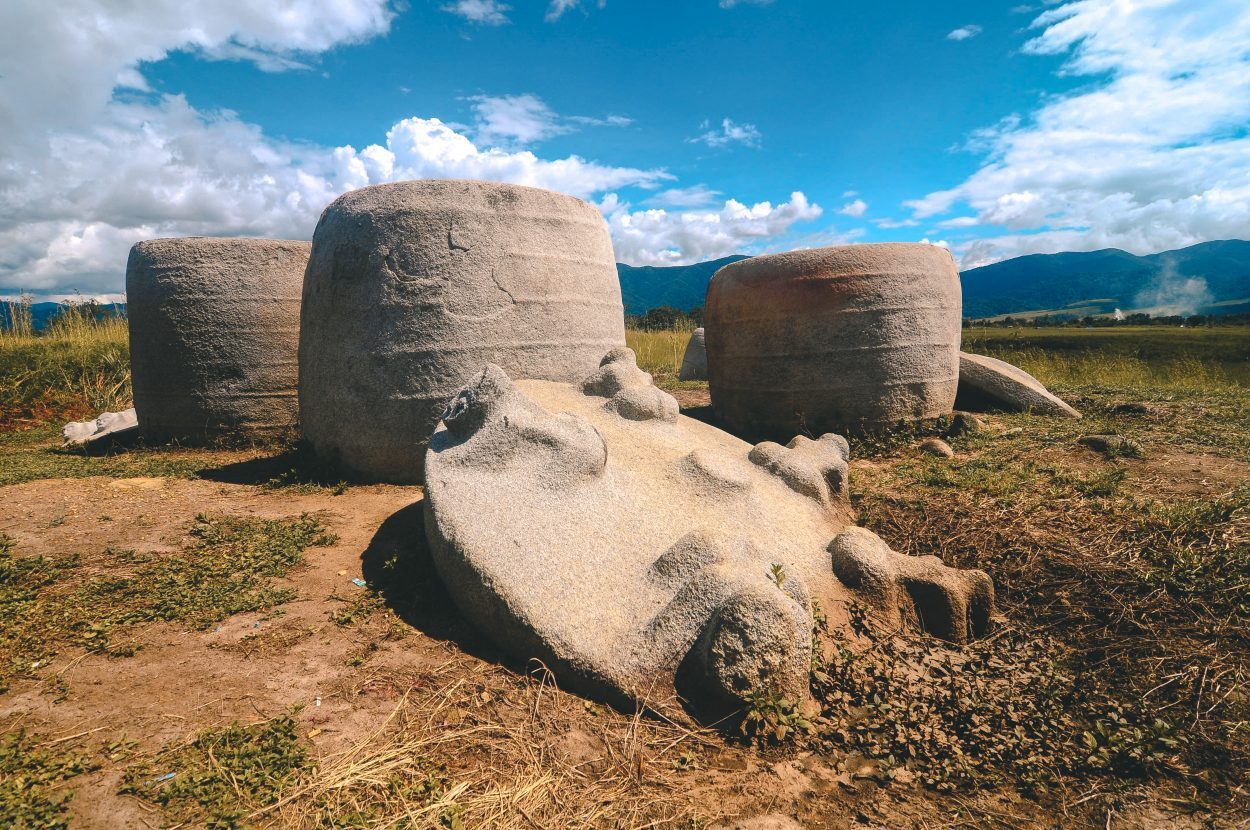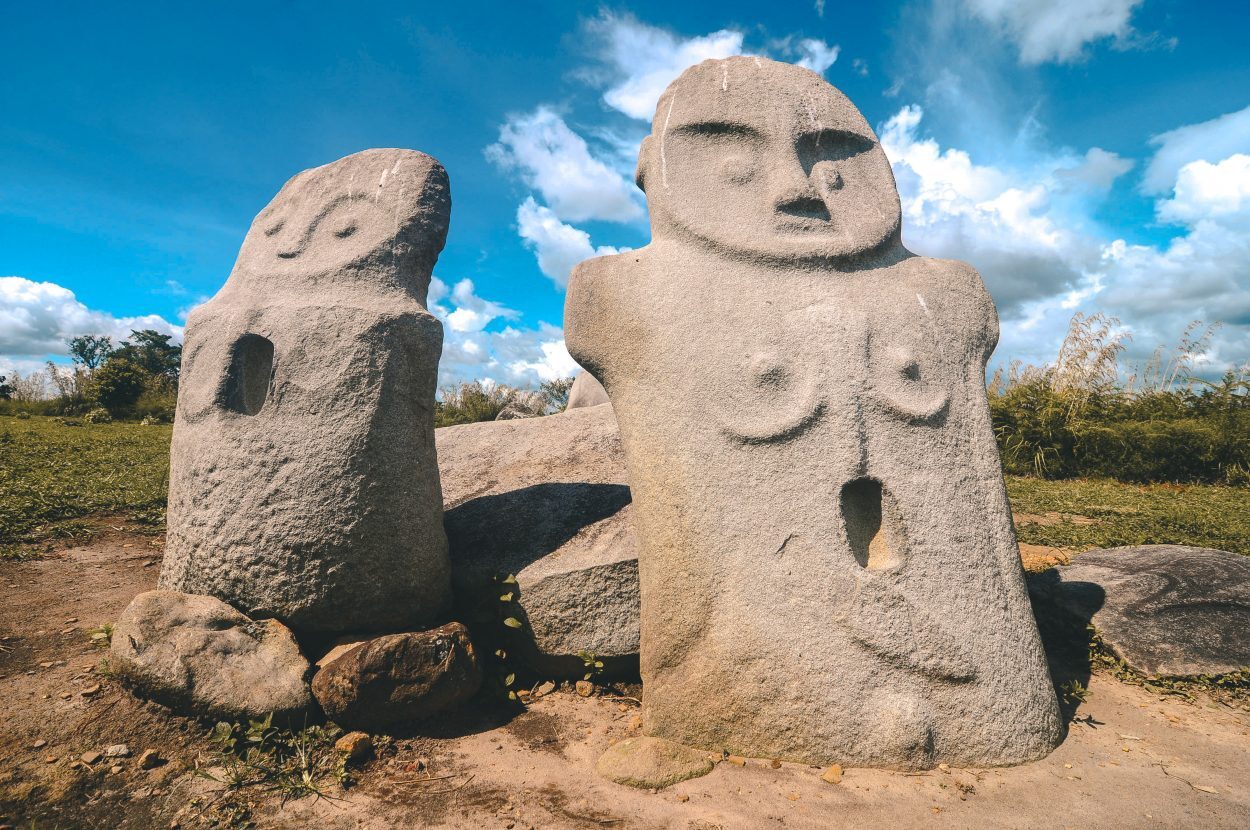
© alvarobueno - Shutterstock
The Lore Lindu Megaliths are a series of carved stone monuments, centred on the Bada Valley within the Lore Lindu National Park, located on the Indonesian island of Sulawesi.
Sulawesi also known as Celebes is one of the four Greater Sunda Islands and was first inhabited during prehistory when the island almost certainly formed part of the land bridge used for the settlement of Australia and New Guinea by at least 40,000 BC.A majority of the present-day island inhabitants descend from the Buginese or Bugis people, which are an ethnic group that migrated around 2000 BC to the area around Lake Tempe, and Lake Sidenreng, in the Walannae Depression in the southwest peninsula of Sulawesi.
Little is known about the Pre-Bugis people, as the extent of archaeological research has been limited, but anthropologists theorise a chiefdom culture based on an economy of hunting and gathering, and swidden or shifting agriculture.

© kholik – Shutterstock
In Central Sulawesi around the Bada Valley in the Lore Lindu National Park, the Nature Conservancy in conjunction with Indonesian park officials has recorded over 400 megalithic monuments in and around the park.
Among the megaliths are 30 arca menhirs, or human forms, numerous large urns, and a number of endemic animal depictions which are unique to the region.
The arca menhirs are minimalistic in appearance, with oversized heads, rounded eyes, and a single line to define the facial features such as eyebrows, cheeks, and the chin. The statues have long straight bodies, some with oversized genitalia, and are mainly positioned alone, in pairs, or small group clusters.

© kholik – Shutterstock
The purpose of the arca menhirs has been a puzzle for archaeologists, but one theory suggests that they were erected to honour, commemorate and/or communicate with the ancestors. Local people believe that the statues are associated with the goddess Pahit Lidah, a mythical figure who turns men who transgress moral codes into stone. One statue named Tokala'ea, is said to be a rapist, whilst another statue named Tadulako was a villager who stole rice.
Near the arca mehirs are cylindrical jars sometimes covered with a stone lid, known locally as Kalamba. Archaeological research in 2010 established that the kalambas served as collective tombs, sometimes enclosing over 10 people or entire family units.
The first reference to the Lore Lindu megaliths dates back to 1889, and were first surveyed in 1917 and 1922 by Walter Kaudern during an archaeological inventory of the three connected valleys, Bada, Besoa and Napu.

© kholik – Shutterstock
Some sources suggest that they may be related to a 2,000-year-old culture in Laos, Cambodia, and other parts of Indonesia, however, studies of two kalambas from the megalithic site of Pokekea within the Besoa Valley indicate a chronological range between AD 766-1272.
During the latter end of this period, the region suffered a severe drought between the 8th and 13th centuries AD, that in combination with possible volcanic activity and increased localised salinity led the natives to abandon the practice of erecting megalithic monuments at Lore Lindu in the 12th century AD.




Reader Comments
to our Newsletter